Occupational Safety Training for Harmonica Manufacturing
99,000 ₫
Note: The above price is calculated per person and may vary depending on the number of trainees participating in the course and market fluctuations. For more accurate pricing support, please refer to the pricing table or contact our consulting staff directly.
Occupational safety is an important issue in harmonica manufacturing factories and needs to be addressed promptly to ensure the health and safety of workers and enhance the reputation of businesses. The Occupational Safety Training course is one of the effective solutions to raise awareness on how to prevent workplace accidents for workers involved in harmonica production.
Table of Contents
Toggle1. Overview of the Harmonica
a. What is a Harmonica?
The harmonica is a type of wind instrument. It is also called a mouth organ or reed harp. This is a compact instrument, usually rectangular in shape, with multiple small holes on the front through which the player blows and inhales air. When blowing or inhaling, the reeds inside the harmonica vibrate, producing sound.
Each hole on the harmonica can produce a different sound, depending on how the player blows or inhales, as well as how the holes are covered or uncovered. The sound of the harmonica can be very diverse, ranging from soft and melodic to lively and robust, creating a unique and distinctive musical style.

b. Types of Machinery for Harmonica Production
- Metal Cutting Machine: This machine is used to cut metal sheets to form parts of the harmonica frame and reeds. It is usually computer-controlled to ensure precise dimensions and shapes.
- Metal Press Machine: Used to press metal parts together to form the harmonica frame or other small components. This is an important step to ensure the solidity and accurate structure of harmonica parts.
- Bending Machine: Used to bend metal sheets into the required shapes for the harmonica frame and other parts.
- Punching Machine: Used to punch holes in metal sheets to create the blow and draw holes on the harmonica.
- Assembly and Inspection Machines: These machines are used to assemble different parts of the harmonica and inspect the final product quality.

c. Famous Harmonica Brands
- Hohner: One of the oldest and most famous harmonica brands worldwide. Hohner is known for high-quality and diverse products, from beginner models to professional ones.
- Suzuki: Suzuki is also a leading harmonica manufacturer, famous for products with sharp sounds and diverse styles.
- Lee Oskar: Known for harmonicas designed to easily change the plastic membranes at the front, allowing players to flexibly alter the sound.
- Seydel: A German brand with a long history of producing high-quality harmonicas, notable for natural design and sound.
- Easttop: Known for offering good quality products at reasonable prices, Easttop is a popular choice for beginners.
- Tombo: A Japanese brand famous for high-quality harmonicas, loved for their clear sound and good responsiveness to players’ needs.

d. Specific Jobs in a Harmonica Production Factory
Group 1
- Executive Director, Deputy Executive Director, Department Heads in the harmonica production factory.
Group 2
- Safety Officers: managing safety in the factory, designing safety procedures, supervising and urging workers to comply with safe work processes.
Group 3
- Metal Cutting and Bending: Operating machines to cut and bend metal sheets to form parts of the harmonica frame.
- Metal Pressing and Welding: Using press and welding machines to join metal parts together to form the harmonica frame.
- Hole Punching and Metal Cutting: Using punching machines to create blow and draw holes on metal sheets, then cutting the sheets into single reeds.
- Assembly of Components: Workers assemble the reeds into the harmonica frame and attach accessories such as plastic membranes and screws.
- Quality Control: After assembly, products are thoroughly inspected to ensure there are no technical defects and that quality standards are met.
Group 4
- Office work, service, sales, marketing.
- Production management, quality management, human resources management, materials management, financial and accounting management.
- Research and development of new products, packaging and product design.
2. Overview of Occupational Safety Training for Harmonica Production
In this article, we focus on issues surrounding Group 3, because Group 3 are the workers directly involved in production, facing the highest occupational safety risks. For other groups, see here.
a. What is Group 3 Occupational Safety Training?
- Group 3 Occupational Safety Training are sessions that provide workers with awareness and knowledge on how to prevent occupational accidents.
- This safety training course helps workers recognize and avoid hazards, reducing risks of accidents during work.
REGISTER FOR OCCUPATIONAL SAFETY TRAINING SERVICE
b. Training Duration
Initial Safety Training Duration
- The total training time is at least 24 hours, including exam time.
- 8 hours of theory on policies and laws on occupational safety and hygiene
- 8 hours of theory on basic knowledge of occupational safety and hygiene
- 4 hours of theory on specialized training content
- 2 hours of practice on specialized training content
- 2 hours of theoretical examination at the end of the training course
The safety training center will arrange the training time over several sessions depending on the schedule for workers. Usually, there are 6 training sessions, spanning 3 days, provided the manufacturing company can arrange continuous study time.
Periodic Safety Training Duration
- Before the occupational safety card expires, workers who want to renew must attend a periodic occupational safety training course, with the periodic training duration being at least 50% of the initial training duration.
Explanation: the total periodic occupational safety training time is at least 12 hours, including exam time. After completing the periodic course and passing the exam, workers will be reissued or extended their occupational safety card.
c. Training Content
| No. | TRAINING CONTENT | TRAINING DURATION (HOURS) | |||
| Total | Including | ||||
| Theory | Practice | Exam | |||
| I | System of policies and laws on occupational safety and hygiene | 8 | 8 | 0 | 0 |
| 1 | Overview of the legal document system on occupational safety and hygiene. | 6 | 6 | ||
| 2 | System of standards and technical regulations on occupational safety and hygiene. | 1 | 1 | ||
| 3 | Specific regulations of state management agencies on occupational safety and hygiene when building new, expanding, or renovating facilities for production, use, storage, preservation, and inspection of machinery, equipment, materials, and substances requiring strict safety and hygiene. | 1 | 1 | ||
| II | Basic knowledge about occupational safety and hygiene | 8 | 8 | 0 | 0 |
| 1 | Basic knowledge about hazardous and harmful factors at the workplace. | 4 | 4 | ||
| 2 | Methods to improve working conditions. | 1 | 1 | ||
| 3 | Safety culture in production and business. | 1 | 1 | ||
| 4 | Rights and obligations of employers and workers; policies and regimes on occupational safety and hygiene for workers; functions and duties of safety network and safety officers. | 1 | 1 | ||
| 5 | Safety and hygiene regulations, safety signs, instructions on safety and hygiene, use of safety equipment and personal protective equipment; skills and techniques for first aid, accident prevention, and occupational disease prevention. | 1 | 1 | ||
| III | Specialized training content | 6 | 4 | 2 | 0 |
| Comprehensive knowledge of machines, equipment, substances that generate hazardous and harmful factors; analysis, evaluation, risk management of occupational safety and hygiene; safe work procedures with machines, equipment, and substances requiring strict safety and hygiene. | 6 | 4 | 2 | ||
| IV | Final safety training exam | 2 | 2 | 0 | 0 |
| Total | 24 | 22 | 2 | ||
See more training contents of the 6 groups
d. Occupational Safety Card
After completing the occupational safety training course and passing the exam, workers will be issued an occupational safety card (commonly called the occupational safety certificate for Group 3).
The Group 3 safety card clearly shows information such as: full name, date of birth, specific job and working environment. It also includes training duration, a red seal, and signature confirming course completion.
According to the regulations on safety card issuance stated in Clause 2 of Article 24, Decree 44/2016/ND-CP, there are two cases:
- If the employer and employee have a labor contract, the employer must sign, stamp, and endorse the safety card for the Group 3 worker after the worker completes the safety training course from the training unit and passes the exam.
- If the worker is freelance, seasonal, and does not have a labor contract, the training unit must sign, stamp, and endorse the safety card for the worker after completing the training and passing the exam.

3. Identifying Hazards Affecting Workers in Harmonica Production
- Risk of Physical Injuries:
- Cutting and bending metal: Metal cutting and bending machines can cause injury risks if safety procedures are not followed and protective equipment is not properly used.
- Pressing and welding metal: Pressing and welding tasks also carry injury risks from hot materials, explosions, and unsafe practices due to inexperience.
- Chemical Toxicity Risks:
- Paints and chemicals: Painting processes and the use of chemicals to treat metals can pose toxicity risks if operated in unsafe environments and without proper chemical management controls.
- Electronic components: Electronic parts may contain toxic chemicals such as lead and other heavy metals, especially during disassembly and recycling.
- Machinery Safety Risks:
- Machine operation: Safety risks may include machine malfunctions, electric shocks, and other issues related to operating and maintaining equipment.
- Control and maintenance: Errors in machine control and improper maintenance can also cause hazards.
- Health Risks Related to the Working Environment:
- Noise: Production processes may generate loud noise, affecting workers’ hearing if adequate protection measures are not in place.
- Lighting and temperature: Inappropriate lighting and temperature in the workplace can impact health and increase the risk of occupational accidents.
To minimize these hazards, harmonica manufacturing plants must strictly comply with occupational safety standards, provide training and protective equipment to employees, and conduct regular inspections to ensure a safe and healthy working environment.

4. Safety Measures When Participating in Harmonica Production
- Safety Training and Awareness:
- Provide comprehensive and effective occupational safety training for all new employees and regular refresher training for current staff.
- Introduce and familiarize employees with safety rules, emergency procedures, and personal protective measures.
- Use of Personal Protective Equipment (PPE):
- Ensure employees fully and correctly use protective equipment such as helmets, safety goggles, gloves, protective jackets, and work shoes that meet specific job requirements.
- Inspect and maintain PPE to ensure their effectiveness and safety.
- Control of Toxic Risks:
- Ensure adequate ventilation and effective air systems to minimize risks from chemicals and toxic gases during production.
- Use appropriate personal protective devices when working with chemicals.
- Periodically conduct occupational environment monitoring in factories to collect and analyze harmful factors for workers, and adjust to reduce hazards to prevent occupational diseases.
- Machinery Safety Management:
- Perform regular maintenance and safety inspections for all machines and equipment used in production.
- Ensure machines are operated according to safety regulations and only by trained personnel.
- Noise Control:
- Apply measures to reduce noise at the source, such as using soundproof materials or repositioning equipment to lower noise emission.
- Provide hearing protection devices to employees working in noisy environments.
- Risk and Emergency Management:
- Develop and implement emergency plans, including responses to accidents and other emergency situations.
- Ensure sufficient firefighting equipment and train staff in its use.
- Monitoring and Evaluating Effectiveness:
- Conduct regular risk assessments to identify and mitigate potential hazards.
- Evaluate the effectiveness of safety measures and update them as necessary to ensure maximum protection for employees.
5. Benefits of Occupational Safety Training for Harmonica Production
An Toàn Nam Việt offers your business the following great benefits upon completing occupational safety training courses in accordance with Decree 44/2016/ND-CP on occupational safety and hygiene work for companies, factories, and enterprises.
- Workers can identify potential accident risks and take preventive measures to avoid occupational accidents.
- Your business can establish risk prevention measures in production, operation, and maintenance processes.
- Reduce costs associated with occupational safety incidents.
- Uninterrupted production processes help increase labor productivity and product quality.
- Ensure compliance with occupational safety laws to avoid legal risks.
- Create credibility and professionalism in all aspects, thereby enhancing your company’s brand.
Nam Việt’s training courses are a solution to prevent and combat external factors affecting individuals, helping them avoid dangers that could lead to injury or, more seriously, death.
REGISTER FOR OCCUPATIONAL SAFETY TRAINING SERVICE
6. Customer Feedback After Completing Occupational Safety Training for Harmonica Production
An Toàn Nam Việt has many years of experience accompanying numerous businesses across Vietnam in general and in the southern provinces in particular. This responsibility is very precious to Nam Việt, so the Occupational Safety Training work is increasingly professional. The motivation for Nam Việt’s growth comes from both positive feedback and suggestions from businesses. Below are some testimonials from valued partners we have served.
Bắc Nam E&C Investment Construction Joint Stock Company
“My first time using the service at An Toàn Nam Việt was surprisingly pleasant due to the 24/7 enthusiastic support from the consulting team. Organizing classes was quick and convenient for our company. Thank you very much for Nam Việt’s service!”
Hoa Đất Construction and Trading Joint Stock Company
“Nam Việt’s service has helped us a lot in simplifying occupational safety and completing safety documentation for our work process. The consulting team was enthusiastic and timely in responding to our questions. Five stars for Nam Việt.”
See more customer interviews after using An Toàn Nam Việt’s services.
7. Labor Safety Training Capacity of An Toàn Nam Việt
An Toàn Nam Việt is a reputable and high-quality labor safety training center in Vietnam today. Our labor safety training sessions are continuously held at manufacturing workshops, factories, or construction sites across the country (all 63 provinces of Vietnam).
REGISTER FOR LABOR SAFETY TRAINING SERVICE
Labor Safety Training License
- An Toàn Nam Việt has been inspected and certified by the Department of Safety under the Ministry of Labor – Invalids and Social Affairs for meeting the conditions to conduct labor safety and hygiene training. This further solidifies our strong capability in labor safety training.

Training Materials and Lectures
- Before being used in our labor safety training courses, our training materials have been reviewed and approved to ensure the content is accurate and effective when applied.
- Our instructors’ teaching methods follow the standards of An Toàn Nam Việt, based on the research and expertise of specialists in occupational safety and hygiene training to maximize knowledge absorption for learners.
Facilities
- Controlling environmental factors in the training rooms helps increase teaching efficiency and improves learners’ knowledge absorption.
- Our training facilities are always arranged with spacious classrooms that meet standards for area, lighting, and training equipment, etc.
8. Nationwide Reputable and Quality Safety Training Center
At An Toàn Nam Việt, we always prioritize our dedication to labor safety training as our foremost commitment. For us, imparting knowledge on self-protection to workers so they have a safe foundation on their livelihood path contributes to national development.
To ensure training effectiveness, we meticulously prepare every detail, no matter how small. From tools, teaching equipment, curricula, materials, sound, to lighting.
Our labor safety trainers are experts with many years of experience in the field. They even have research works identifying hazards across various industries and ways to prevent them.
Our instructors’ lectures are distilled from practical experience and delivered in the most vivid and understandable way to workers. These factors help learners feel comfortable during training and absorb our teaching effectively. Of course, the knowledge delivered strictly follows Decree 44/2016/ND-CP.
Thus, trainees gain many hazard prevention measures and ways to protect themselves, and they can appropriately apply them in real work situations.
Our training center proudly provides professional, reputable labor safety training services with the following advantages:
- Competitive training costs while maintaining high quality.
- Flexible training schedules that suit company production needs.
- Fast and legally compliant procedures for issuing labor safety training certificates.
- Experienced trainers with many years in the profession.
- Classrooms are controlled for factors affecting training quality, improving teaching efficiency and learners’ absorption.
- Lessons are tailored to occupational safety work in enterprises.
- An Toàn Nam Việt works dedicatedly and professionally to support customers promptly and accurately.

9. Additional References for Labor Safety Training Materials on Harmonica Production
- Labor Safety Materials for Harmonica Production
- Complete Set of Labor Safety Training Materials
- Labor Safety Training Test Papers
- Labor Safety Curriculum for Harmonica Production
- Multiple Choice Safety Test for Harmonica Production
No comments yet

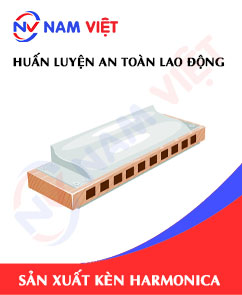
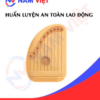
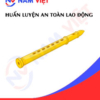



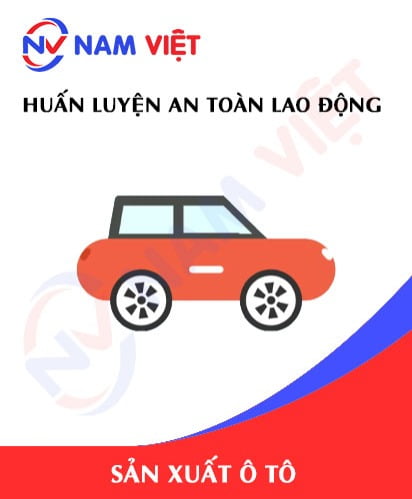


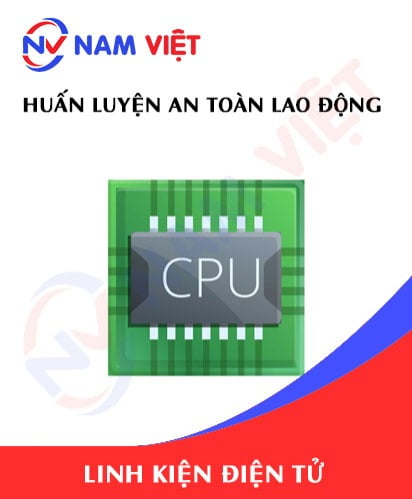
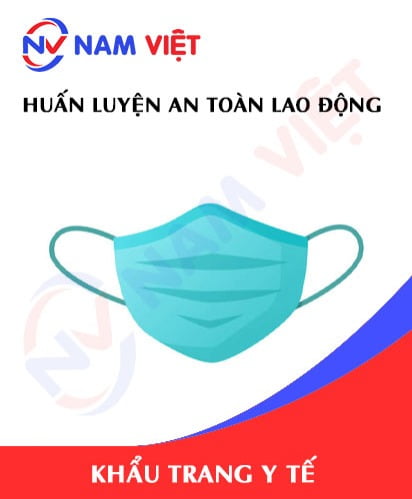



Review Occupational Safety Training for Harmonica Manufacturing
There are no reviews yet.